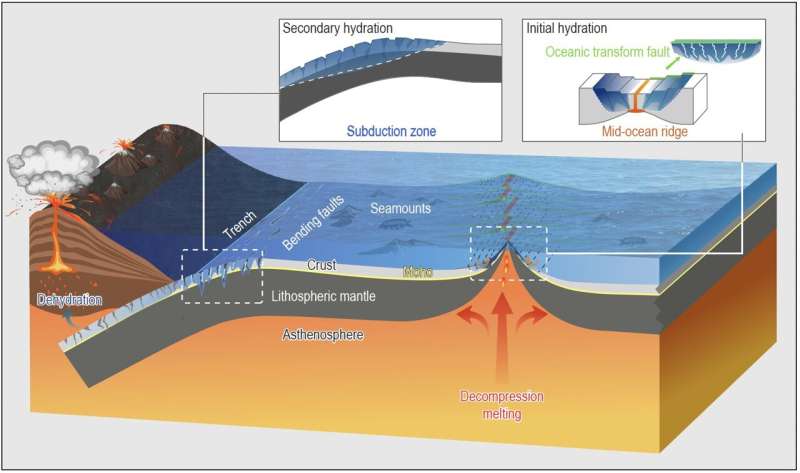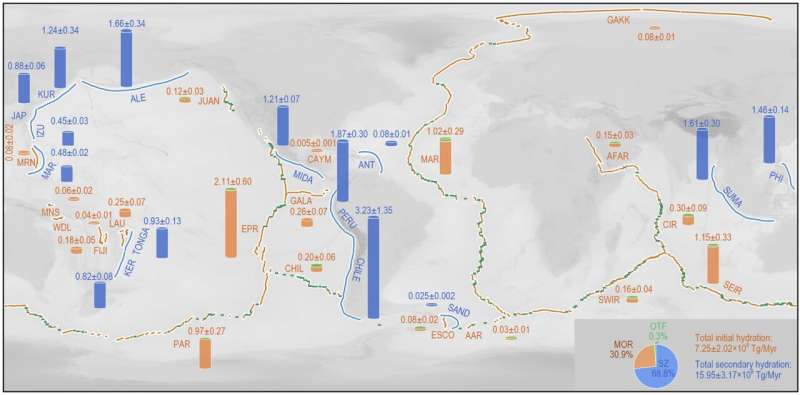This article has been reviewed according to Science X's editorial process and policies. Editors have highlighted the following attributes while ensuring the content's credibility:
fact-checked
trusted source
proofread
Evaluating dual hydration of the oceanic lithosphere

A new study led by Dr. Jian Lin (Southern University of Science and Technology) and Dr. Fan Zhang (South China Sea Institute of Oceanology, Chinese Academy of Sciences) reexamines how the ocean's lithosphere operates.
"Water is crucial to processes of both Earth's surface and interior, facilitating plate tectonics and making the Earth a habitable planet. Seawater penetrates into oceanic lithosphere through fractures on seafloor and migrates along faults and pores. The distribution of water governs the style of convective flow and distinct tectonic behavior of the Earth," Jian says.
The hydration extent of oceanic lithosphere has been estimated by various methods, the results have shown the hydration degree of the oceanic crust is varying during its life cycle. "The hydration of oceanic lithosphere is composed of two key stages. The initial hydration mainly occurs at mid-ocean ridges, where water percolates into newly formed oceanic crust. The secondary hydration occurs at subduction zones, where water percolates into crust and upper mantle through extensional faults in response to plate bending," Fan says.
The researchers quantitatively estimated the water input rate for different tectonic settings by integrating the controlling factors including length or width of plate boundary zones, the properties of hydrated lithologic layers, spreading rate at mid-ocean ridges, as well as convergence rate and plate age at subduction zones. The team found that the ridge-transform system, and subduction zones accounts for ~31.2% and ~68.8% of global water input rate, respectively.

The results also indicate that most of the mantle hydration is contributed by the subduction-related process. "These new exciting results add to growing evidence that the secondary hydration at subduction zone is fundamentally essential to plate dynamics and water cycle of the Earth," Jian says.
It is generally accepted that water could influence the plate tectonics and mantle convection, facilitate subduction initiation, and play an important role in earthquake and volcanism. These new results evaluate dual hydration of oceanic lithosphere, and provide important reference for global sea level change, earthquake and volcanic activities, as well as fluid-structure interaction of the Earth.
The study is published in the journal National Science Review.
More information: Fan Zhang et al, Dual hydration of oceanic lithosphere, National Science Review (2023). DOI: 10.1093/nsr/nwad251
Provided by Science China Press




















